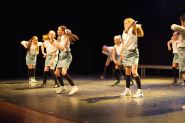In order to perform effective assessment in PE, we have to overcome specific barriers that do not arise in other subject. Firstly, it is harder to spot if the knowledge being taught has been understood and implanted by the students in a PE lesson. This differs due to technicalities of each individual sport, from the tactics, to technique, to reading of the game.
Assessing the children practically is about personal perspective, as two individuals may have contrasting ideas on how best to assess one pupil in the lesson. It is certainly easier to assess the theoretical side of the subject, as the information is less open to personal interpretation. Using theoretical assessment for sending data back to parents and for data collection in schools provides quantitative data for those individuals to see the progress being made by all the students under that teacher’s guidance.
The situation in which an assessment is undertaken can affect the outcomes for the students and the teacher. Being assessed in a simulated situation compared to a “real” situation can produce very different results from the same pupil. An example of this is assessing someone in a drill, as this is the simulated situation as drills are not part of actual game play, rather than assessing the individual in a game/match situation as this is more of real situation and closer to how NGBs and clubs will assess.
However, some sports and topics do give teachers quantifiable data in which to assess the pupils more accurately. Athletics/track & field provide a perfect example, as all the events in this sport give a number as a result; timing of the running events in minutes and distance of throws and jumps in meters. Similarly, fitness tests produce quantitative figures as a result which cannot be interpreted but evaluated by the teacher and for that information to be given to the children.
Another popular form of assessment used is peer assessment, from criteria by the teacher. This method of assessment allows the students who understand what is being asked of them, but are not able to demonstrate it practically. This method allows the teachers to be able to see how the students have interpreted their lessons, both practically and theoretically which gives a more holistic assessment process for the teachers and therefore the feedback to the students and their parents likewise.










